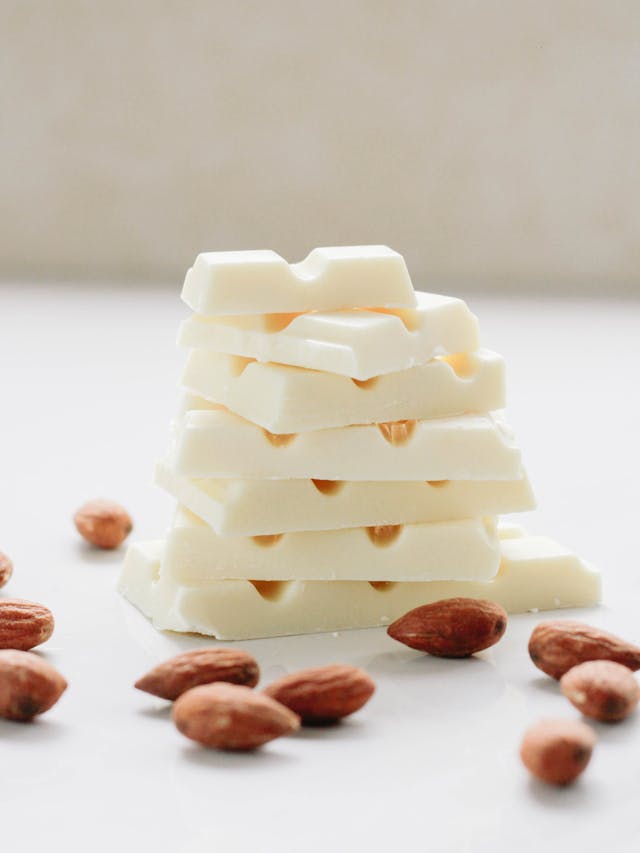Welcome back to GertieBlu, where we explore the finer things in life! Today, we’re indulging in one of the most beloved treats in the world: chocolate. Whether you’re a casual indulger or a devoted chocoholic, understanding the different types of chocolate and their health implications can elevate your appreciation for this delectable delight.
Types of Chocolate: A Delectable Variety
1. Dark Chocolate
Dark chocolate is known for its rich, intense flavor and high cocoa content, usually ranging from 70% to 99%. It’s less sweet compared to other types, which makes it a favorite among purists and those who enjoy a more robust chocolate experience. The higher the cocoa content, the more bitter the taste, but it also means more health benefits.
2. Milk Chocolate
Milk chocolate is the sweet, creamy favorite of many. It contains lower cocoa content (usually between 10% to 50%), mixed with milk solids, sugar, and sometimes vanilla. The result is a smooth, mellow flavor that melts in your mouth, making it a popular choice for candy bars and various confections.
3. White Chocolate
White chocolate stands out with its pale color and distinctively sweet, buttery flavor. It doesn’t contain cocoa solids but is made from cocoa butter, sugar, and milk solids. Technically, it’s not a true chocolate, but it shares enough characteristics to be a beloved member of the chocolate family.

4. Ruby Chocolate
A relatively new addition to the chocolate world, ruby chocolate is made from specially processed ruby cocoa beans. It has a unique pink hue and offers a fruity, berry-like flavor. It’s a delightful and visually appealing option for those looking to try something different.
5. Unsweetened Chocolate
Often used in baking, unsweetened chocolate is pure chocolate liquor without any added sugar. It’s intensely bitter and not meant for snacking, but it’s perfect for recipes where you can control the sweetness.
6. Bittersweet and Semisweet Chocolate
These types of chocolate fall between dark and milk chocolate in terms of sweetness and cocoa content. Bittersweet chocolate usually contains around 60% to 70% cocoa, while semisweet chocolate has about 35% to 60%. They’re commonly used in baking and offer a balanced flavor that’s not too sweet nor too bitter.
Is Chocolate Healthy?
Now, the million-dollar question: is chocolate healthy? The answer is, it depends on the type and amount you consume.
Health Benefits
- Antioxidants: Dark chocolate is packed with antioxidants, specifically flavonoids, which help combat oxidative stress and may reduce the risk of chronic diseases.
- Heart Health: Moderate consumption of dark chocolate has been linked to improved heart health. It can help lower blood pressure, improve blood flow, and reduce the risk of heart disease.
- Mood Booster: Chocolate contains compounds like theobromine and phenylethylamine, which can enhance mood and promote feelings of happiness and well-being.
- Brain Function: Some studies suggest that the flavonoids in dark chocolate may improve cognitive function and reduce the risk of neurodegenerative diseases.
Moderation is Key
While chocolate can have health benefits, it’s essential to consume it in moderation. Here’s why:
- Sugar Content: Many chocolate varieties, especially milk and white chocolate, are high in sugar, which can contribute to weight gain, dental issues, and increased risk of diabetes.
- Calorie Dense: Chocolate is calorie-dense, meaning even small amounts can add up quickly in terms of caloric intake. Overconsumption can lead to weight gain.
- Fat Content: Chocolate contains fats, primarily cocoa butter. While it includes healthy fats, excessive intake can still contribute to cardiovascular issues if not balanced with a healthy diet.

Conclusion: Savor the Sweetness
Chocolate is a versatile and beloved treat that can fit into a healthy lifestyle when enjoyed in moderation. Opting for dark chocolate with a higher cocoa content can provide more health benefits, but remember to balance your indulgence with other healthy habits.
Next time you unwrap a piece of chocolate, savor the rich history, the intricate flavors, and the potential health perks it offers. Here at GertieBlu, we believe in enjoying life’s pleasures while staying informed and mindful.
Stay sweet, GertieBlu









